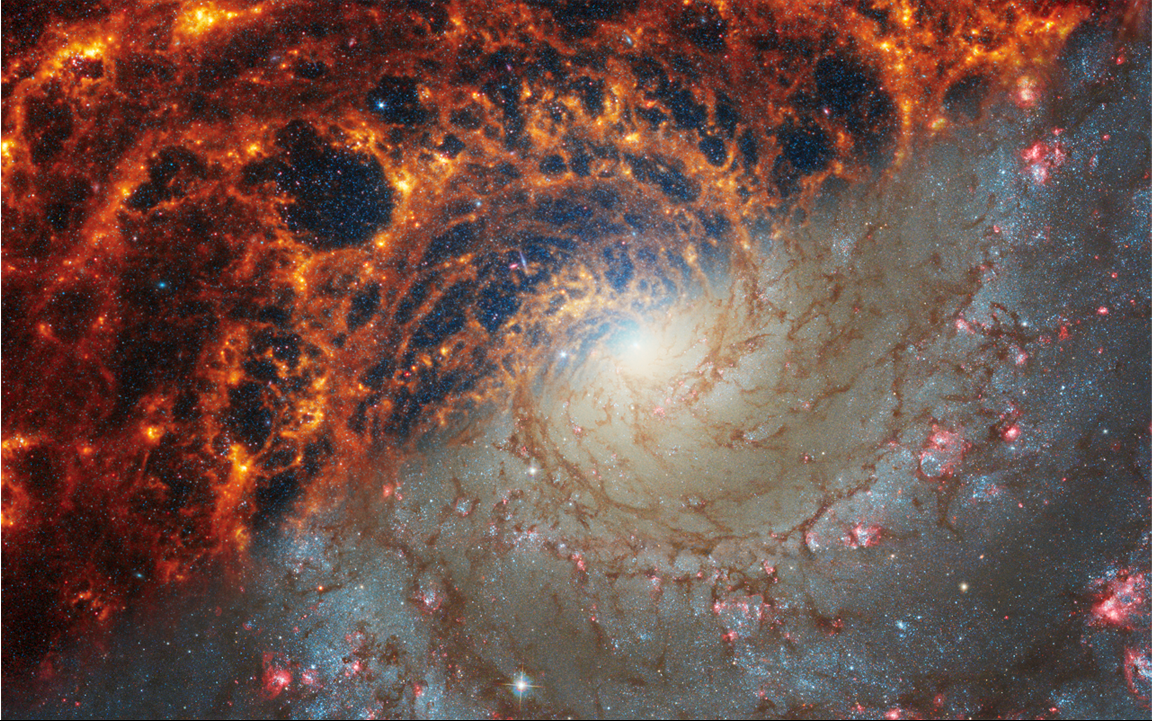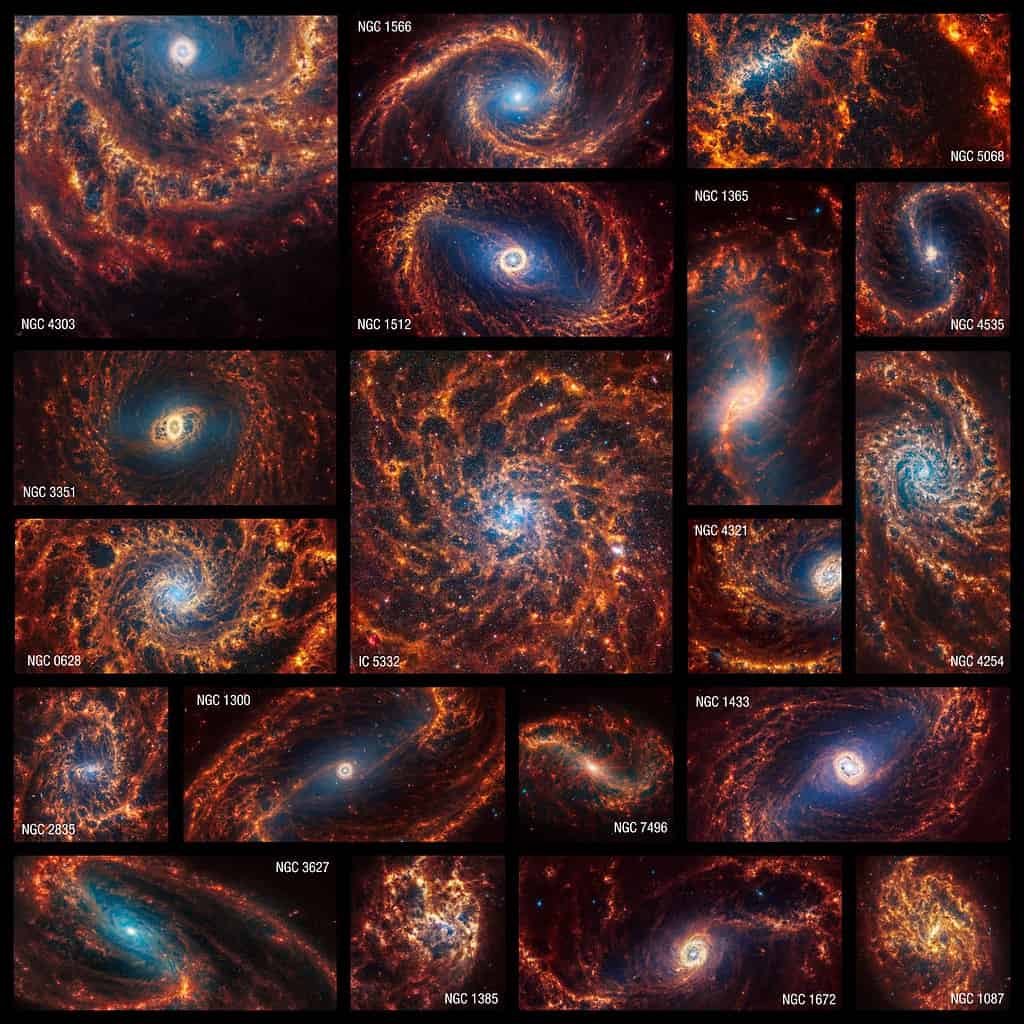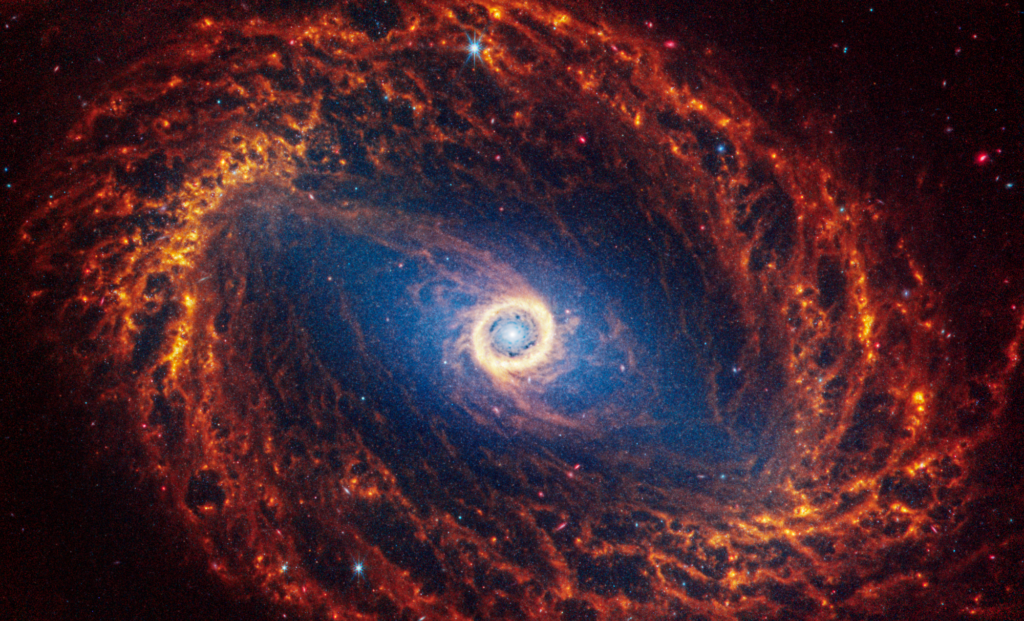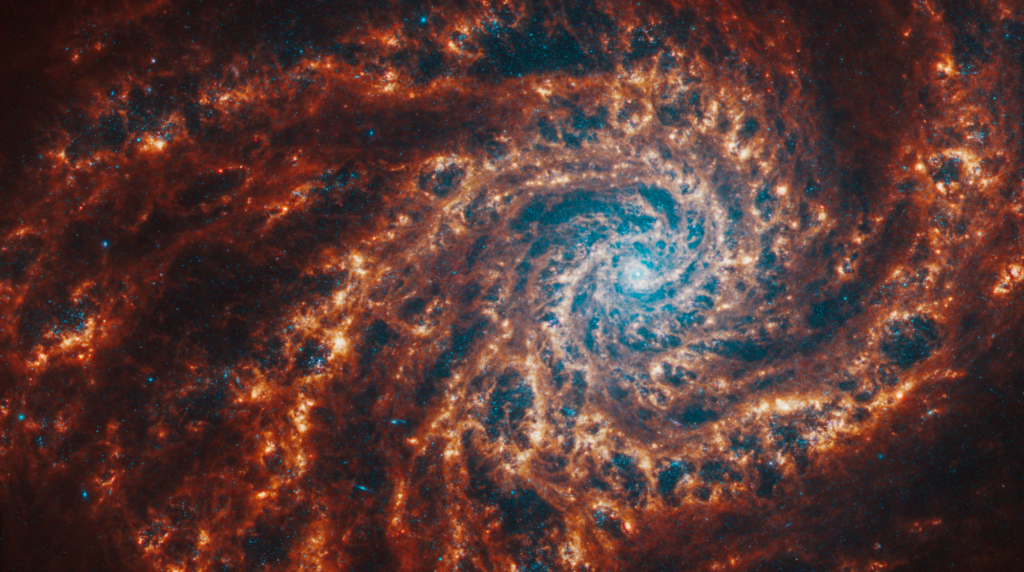
“Webb’s new images are extraordinary,” said Janice Lee, a project scientist for strategic initiatives at the Space Telescope Science Institute in Baltimore. They’re so good that even for researchers who have studied galaxies for decades, they’re still mind-blowing. “Bubbles and filaments are resolved down to the smallest scales ever observed and tell a story about the star formation cycle.”
Spiral galaxies are a common galaxy type. We also live in a spiral galaxy — the Milky Way. There’s still much we don’t know about these galaxies, particularly when it comes to how the stars inside them form and evolve.
A galactic flurry

These 19 photos show millions or possibly even billions of individual stars, clumped together in around 100,000 star clusters. The galaxies that JWST highlighted are studied in a program called Physics at High Angular resolution in Nearby GalaxieS (PHANGS). PHANGS has been going on for some time, using data from the Hubble Telescope and a couple of other observatories. But JWST enables the astronomers to see the galaxies in different wavelengths, which allows them to study different parameters of the galaxies.
The closest of the 19 galaxies is called NGC5068 and is around 15 million light years from Earth. NGC5068 is a “field” galaxy, meaning it’s not a part of another group or cluster of galaxies. The farthest galaxy of the group is NGC1365, about 60 million light years from Earth. So, when we say these galaxies are “nearby”... it’s all relative.

In addition to being absolutely stunning visually, the images will enable researchers to look at stellar processes that are typically obscured.
The JWST primarily operates in the infrared spectrum, which allows it to peer through dust clouds that often obscure the early stages of star formation in visible light. Since newly forming stars are enveloped in dust and gas, infrared observations are crucial for studying these nascent stellar objects. The JWST’s sensitive instruments can detect the faint glow of these formations, providing insights into their properties and the processes at play.
“These data are important as they give us a new view on the earliest phase of star formation,” said University of Oxford astronomer Thomas Williams, who led the team’s data processing on the images.

With its large, 6.5-meter primary mirror, the JWST also boasts unprecedented resolution and sensitivity. This allows astronomers to observe distant galaxies in exquisite detail, including the small-scale structures where star formation occurs. By resolving individual star-forming regions within galaxies, scientists can study the conditions and mechanisms that lead to the birth of stars, offering clues about how galaxies evolve over time.
“I feel like our team lives in a constant state of being overwhelmed — in a positive way — by the amount of detail in these images,” added Williams.

The JWST’s observations will help astronomers study not just the stars themselves but also the interstellar medium from which they form. This includes clouds of gas and dust, as well as the complex interplay of physical and chemical processes that facilitate star formation. By understanding these building blocks, scientists can piece together a more comprehensive picture of how galaxies develop.
The JWST has multiple missions. From peering into the very heart of the universe and looking at the earliest galaxies and black holes to studying our very own solar system, there’s no shortage of valuable information coming from the telescope. It’s opening up a new window to the universe.









